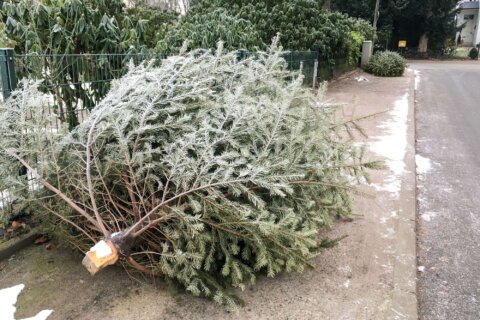This video is no longer available.
Just walk out the door in the morning and it’s quickly apparent that winter is coming. For some, it means the Christmas season is near. Or cuffing season or ski season.
For utility companies, it means broken water main season.
At the Washington Suburban Sanitary Commission, they know that, and they vow they’re ready for whatever winter brings — which is typically big spikes in work.
“In a year, we can repair around 1,800 water main breaks,” said WSSC General Manager and CEO Carla Reid.
A majority of those breaks will happen between now and the end of February.
“Just during that four month period we can get up to 1,100 water main breaks,” Reid said.
WSSC will have crews on standby at all hours of the day and night, with contractors also at the ready for the really big jobs. The time it takes to fix any breaks can vary, based on the size and severity of the break.
What’s known as a circle break, where the pipe breaks in a nice, even circle, can take a few hours to fix. Other times a gash might rip out of the pipe, requiring crews to come in and put a new 7-foot span of pipe in the ground. Never mind the fact that it’s not always easy to find exactly where the break is.
This video is no longer available.
“There is no magic board that lights up when a water main breaks,” said spokeswoman Lyn Riggins. “We have 5,800 miles of water mains in the two counties, and we don’t know when those smaller 6 or 8 inch water mains in your neighborhood street is breaking or is leaking.”
Reid said about 40% of those pipes are also over 50 years old. Made up of old iron, they’ve pumped a lot of water through the region, and the dip in temperatures means they’re the ones most likely to need emergency repairs.
But even if it’s not always clear where the break is happening, WSSC does have a clue about when things might start getting busy. It’s usually when the temperature of the Potomac River starts to drop.
“It’s the closest thing we have to a crystal ball,” said Riggins. Whenever the river reaches its lowest temperature since the previous winter, “we know a couple of days later we are going to see an increase in water main breaks.”
“New low on Monday,” explained Riggins, “you will likely see an increase in breaks Wednesday or Thursday.”
And it doesn’t have to be a dramatic drop.
“It’s no magic number,” Reid said. “But when we see a constant decrease in temperature,” even if it’s just a degree or two, they know breaks can start to happen. If you see one before a WSSC crew is on the scene, you’re asked to call it in just in case they haven’t detected it yet.
“We are absolutely winter ready,” Reid said. “We are ready for however busy it is. It can’t be too busy.”








